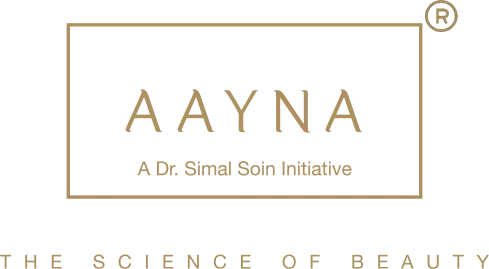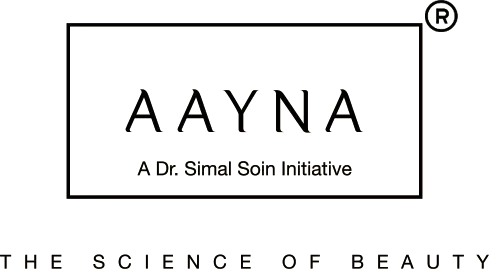According to recent reports, the tattoo removal market size is valued at around $314.44 million, as of 2022 and the numbers are expected to grow exponentially over the next few years. This goes to show that not only are more people getting tattoos, but there are also individuals seeking effective, reliable, and safe tattoo removal procedures as well.
Indeed, significant advancements have been made in tattoo removal techniques over the past decade, allowing for safer, more efficient, and less side-effect-prone procedures. While complete tattoo removal is not always possible or guaranteed, various methods have emerged that offer very promising results.
Among them, laser tattoo removal is often the most coveted and sought-after procedure, thanks to its efficiency, promising results, and precision in tattoo removal. What’s great about laser tattoo removal is also the safety because it targets the tattoo ink only, thus avoiding inflicting serious damage to the surrounding skin.
Over the years, the field of laser therapy for tattoo removal has undergone effective upgrades, which we will discuss at length in this article.
Table of Contents
Understanding Traditional Laser Treatment for Tattoo Removal
Breakthrough in the Laser Treatments for Tattoo Removal
How are Colored Tattoos Removed Using Laser?
Conclusion
FAQs
Understanding Traditional Laser Treatment for Tattoo Removal
Before we venture into the latest advancements in the field of laser tattoo removal and the series of new procedures that are available, it’s crucial we walk you through the traditional and effective laser therapy options that are presently more in use.
Quality-switched (QS) lasers are the most commonly used laser treatments for tattoo removal. To this day, they are used across the world for more promising and desired results. These lasers emit high-intensity light pulses in short durations, specifically targeting the tattoo ink while minimizing damage to surrounding skin tissue. The laser breaks down the ink particles into smaller fragments, which are then naturally eliminated by the body’s immune system. Multiple sessions are usually required for optimal results.
Nd: YAG, which is a commonly used laser treatment for tattoo removal functions on the principles of QS lasers.
AAYNA Skin Clinic specializes in offering Cutera Laser Solutions for tattoo removal, which assures effectiveness and safety when it comes to tattoo removal. Leveraging the power of both nanosecond and picosecond laser pulses, this versatile treatment addresses a wide range of tattoos, irrespective of their size, design, and even the pigment used.
Breakthrough in the Laser Treatments for Tattoo Removal
While the standard QS laser is undoubtedly one of the best technological advancements, there are a series of new breakthroughs worth discussing.
Thanks to persistent innovation, we now have access to a series of new strategies for tattoo removal, which offer better precision, optimal results and are 100% safe too.
Let’s walk you through each of these treatment options in detail:
1. Combination laser treatment
Besides standard laser therapy, recent studies report that the use of non-ablative or ablative fractional resurfacing has promising results in tattoo removal. However, there is a catch.
The effectiveness of the treatment is augmented when combined with either QS ruby laser treatment or monotherapy. Here’s why it’s considered beneficial:
- Enhance pigment clearance
- Prevent risks of blistering and/or skin damage
- Quicker recovery
- Reduce risks of hypopigmentation induced by laser therapy
- Ideal for multi-colored tattoos
Combining fractional resurfacing with traditional QS lasers can have a synergistic effect. This means that using both techniques together can enhance the overall effectiveness of tattoo removal.
2. Multi-pass treatment
Next up on the list is the efficacy of multi-pass treatment, whose main objective is to reduce the number of sessions the individual requires for complete removal of the tattoo.
Under this, studies by Kossida et al. are emphasized, which explored the use of the R20 method for effective tattoo removal. The procedure offers “accelerated lightening” of the tattoo by using four laser passes in a single session.
As intense as it sounds, the treatment is effective and shows promising results with less downtime and quicker recovery. The treatment involves the administration of each laser pass with a time gap of 20 minutes. The waiting time of 20 minutes is provided to allow for the complete resolution of the immediate whitening that occurs after the laser treatment.
Compared to the traditional single-pass treatment that is currently used for tattoo removal, R20 and R0 show better and quicker results.
3. Picosecond lasers
The latest breakthrough in the field of laser tattoo removal is picosecond lasers, which use a pulse duration of 10-12 seconds. When compared with nanosecond lasers, studies found that picosecond lasers have better efficiency in removing tattoos with darker pigments, for example, blank ink.
The commonly used tattoo pigment is around 40 nm in diameter. Research has found that the picosecond laser, which has a shorter pulse duration, targets the tattoo pigment more precisely for easy fragmentation of the ink.
4. Microencapsulated tattoo ink
This particular tattooing technique and pigment isn’t widespread and is regarded as “designer inks.” These microencapsulated inks are created by enclosing water-soluble dyes within tiny beads made of polymethylmethacrylate (PMMA).
When it comes to removing these tattoos, the treatment targets the encapsulating shell rather than completely disrupting the entire pigment particle. This approach allows for more precise and localized treatment. By directing laser energy or other removal methods at the shell, the encapsulation can be broken, releasing the dye and facilitating its subsequent clearance from the body.
Ideally, this process of laser tattoo removal is found to be effective in individuals with larger designer tattoos. Also, the microencapsulation, the kind of pigment used, and the individual’s skin make a huge difference when it comes to the results.
How are Colored Tattoos Removed Using Laser?
When it comes to tattoo removal using laser, the majority of the discussion is surrounding the standard tattoo ink, which is black.
However, when it comes to colored tattoos, current studies report that the newer laser tattoo removal breakthroughs that we discussed above, including fractional resurfacing, multi-pass treatment, along with traditional treatment options are more effective in the precise elimination of the tattoo from the skin.
Here’s a breakdown of the same:
Red tattoos – Current studies report that red, orange, and red-brown pigments respond well to the 1064nm QS Nd: YAG laser.
Green tattoos – For the removal of green tattoos, the use of QS alexandrite and QS ruby laser has been found to be quite effective and result-driven.
Light-colored tattoos – Besides QS laser treatments, the use of ablative laser resurfacing with pulsed CO2 and erbium-doped YAG lasers has been found to be quite beneficial in optimal removal.
Conclusion
There are significant advancements in the field of laser tattoo removal process and treatment options. If you have been considering getting one, be assured that the results are visible from the first session. However, multiple sessions are required with the traditional laser tattoo removal for clean results.
The future of laser tattoo removal seems quite promising. At AAYNA Skin Clinic, we pride ourselves on offering the latest and globally acclaimed laser technology for prompt and effective tattoo removal that is safe and done by skilled and experienced professionals. Kindly contact us directly for consultations and appointment-related queries.
FAQs
1. What is the latest tattoo removal technology in 2023?
Tattoo removal technologies are consistently evolving and we have come a long way from the use of the QS lasers. At present, there are different types of emerging laser tattoo removal technologies, including ablative fractional resurfacing, multi-pass treatment, picosecond lasers, etc.
2. Is tattoo removal safe in India?
Tattoo removal in India primarily uses the latest Q-switched lasers, which are safe, effective, and offers precise results in removing the tattoo over multiple sessions.
3. What influences the cost of tattoo removal in India?
Tattoo removal cost in India relies on multiple factors. These factors can range from the size of the tattoo to the kind of treatment one is opting for, the list is extensive. The kind of ink and color of the ink also influences the cost since it determines the number of sessions one would require to completely remove the tattoo.


